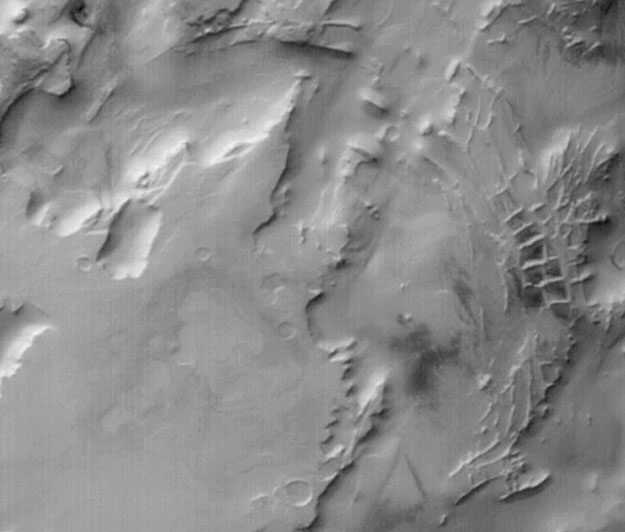Rectangular Ridges on Mars

Explanation:
What could cause rectangular ridges on Mars?
As data flows in from the
two
spacecraft currently orbiting
Mars,
surface structures are seen that are not immediately understood.
These structures pose puzzles that
planetary geologists are eager to solve,
as they might provide clues to past processes that have shaped
Mars over billions of years.
On the right of the
above image is an unusual
array of ridges first spotted in
Mariner 9 data in 1972.
A ridge wall runs for about 5
kilometers.
Two competing progenitor theories include hardened
sand dunes and
once-molten rock that seeped through surface cracks and cooled.
Dubbed "Inca City" for their resemblance to stone walls of an
ancient Earth civilization, the new
Mars Global Surveyor images now show them to be
part of a larger circular pattern,
indicating an origin possibly related to the
impact crater.
(Non-natural origin hypotheses are not invoked by
conservative scientists unless clear indications exist
that natural processes could not work.)
Authors & editors:
Robert Nemiroff
(MTU) &
Jerry Bonnell
(USRA)
NASA Web Site Statements, Warnings,
and Disclaimers
NASA Official: Jay Norris.
Specific
rights apply.
A service of:
LHEA at
NASA /
GSFC
& Michigan Tech. U.

